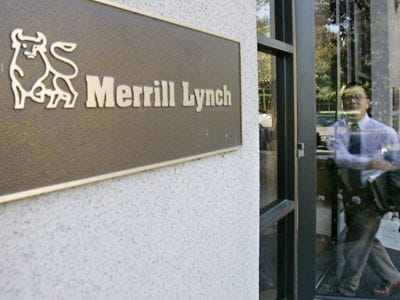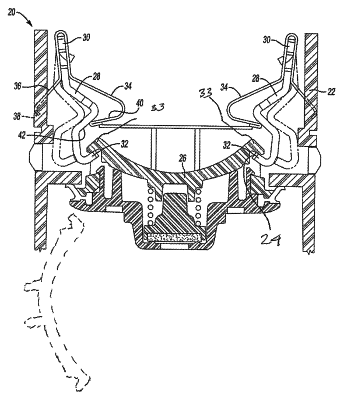statistics ARCH effect in GARCH model


There are some time series where the variance changes consistently over time. In the context of a time series in the financial domain, this would be called increasing and decreasing volatility. In time series where the variance is increasing in a systematic way, such as an increasing trend, this property of the series is calledheteroskedasticity. It’s a fancy word from statistics that means changing or unequal variance across the series. If the change in variance can be correlated over time, then it can be modeled using an autoregressive process, such as ARCH. GARCH was developed in 1986 by Dr. Tim Bollerslev, a doctoral student at the time, as a way to address the problem of forecasting volatility in asset prices.

We use again the function charSeries() in order to display the time series of the returns. Therefore, the main difference between the GARCH model and the ARCH model is that the GARCH model consider also the volatility of the previous period, while the ARCH model do not. In this tutorial, you discovered the ARCH and GARCH models for predicting the variance of a time series. The dataset may not be a good fit for a GARCH model given the linearly increasing variance, nevertheless, the complete example is listed below. Finally, we can make a prediction by calling theforecast() functionon the fit model.
ARCH and GARCH Models in Python
Autoregressive Conditional Heteroskedasticity, or ARCH, is a method that explicitly models the change in variance over time in a time series. Specifically, an ARCH method models the variance at a time step as a function of the residual errors from a mean process (e.g. a zero mean). The variance of the error term in GARCH models is assumed to vary systematically, conditional on the average size of the error terms in previous periods. In other words, it has conditional heteroskedasticity, and the reason for the heteroskedasticity is that the error term is following an autoregressive moving average pattern. This means that it is a function of an average of its own past values.
- Since the original introduction, many variations of GARCH have emerged.
- We can double check present of auto-correlation in square returns by apply Ljung-Box test on square returns.
- In the status line, you can watch the value of the likelihood as it changes with each iteration.
- An ARCH model is used to predict the variance at future time steps.
- There remains strong first persistence in returns and there is clearly periods of strong second order persistence as seen in the squared returns.
Autoregressive models can be developed for univariate time series data that is stationary , has a trend , and has a seasonal component . One aspect of a univariate time series that these autoregressive models do not model is a change in the variance over time. Classically, a time series with modest changes in variance can sometimes be adjusted using a power transform, such as by taking the Log or using a Box-Cox transform. The ARCH or Autoregressive Conditional Heteroskedasticity method provides a way to model a change in variance in a time series that is time dependent, such as increasing or decreasing volatility.
Feel free to contact me for any consultancy opportunity in the context of big data, forecasting, and prediction model development () . The ACF and PACF plots can then be interpreted to estimate values for p and q, in a similar way as is done for the ARMA model. As with ARCH, GARCH predicts the future variance and expects that the series is stationary, other than the change in variance, meaning it does not have a trend or seasonal component. A generally accepted notation for a GARCH model is to specify the GARCH() function with thepandqparameters GARCH; for example GARCH would be a first-order GARCH model.
Therefore, an ARCH model means that the time-dependent volatility depends on the first q lag squared values of the error term. A lag parameter must be specified to define the number of prior residual errors to include in the model. Using the notation of the GARCH model , we can refer to this parameter as “q“.
What Is the GARCH Process? How It’s Used in Different Forms
Run the regression of the model using Ordinary Least Squares and collect the residuals. As we can see from the stylized facts, the normal distribution assumption is not true. We will estimate both ARCH and GARCH models with t-distribution innovation. Robert Engle III is an American economist who won the 2003 Nobel Prize in Economics for his analysis of time-series data with time-varying volatility. GARCH is useful to assess risk and expected returns for assets that exhibit clustered periods of volatility in returns.
When the assumption of conditional normality does not hold, the ARCH parameter estimates will still be consistent, provided the mean and variance functions are correctly specified. The estimates of the covariance matrix will not be consistent unless this option is specified, resulting in incorrect standard errors. An autoregressive integrated moving average model is a statistical analysis model that leverages time series data to forecast future trends. On a plot of returns, for example, stock returns may look relatively uniform for the years leading up to a financial crisis such as that of 2007.
GARCH processes are widely used in finance due to their effectiveness in modeling asset returns and inflation. GARCH aims to minimize errors in forecasting by accounting for errors in prior forecasting and enhancing the accuracy of ongoing predictions. The model in the code snippet above assumes that arch garch model returns have a constant mean. However, in real life, this won’t completely capture the skewness and leptokurtosis that is present. An ARIMA model estimates the conditional mean, where subsequently a GARCH model estimates the conditional variance present in the residuals of the ARIMA estimation.
Heteroskedasticity describes the irregular pattern of variation of an error term, or variable, in a statistical model. Essentially, where there is heteroskedasticity, observations do not conform to a linear pattern. GARCH stands for Generalized Autoregressive Conditional Heteroskedasticity Models. GARCH models are commonly used to estimate the volatility of returns for stocks, currencies, indices cryptocurrencies.

This corresponds to some sort of adaptive learning mechanism. We check the presence of volatility using time series plot for log returns, square returns and absolute returns. Essentially, wherever there is heteroskedasticity, observations do not conform to a linear pattern. Therefore, if statistical models that assume constant variance are used on this data, then the conclusions and predictive value one can draw from the model will not be reliable.
What are the five methods of dispute resolution?
Nevertheless, we can look at an autocorrelation plot to confirm this expectation. The simplest case would be a series of random noise where the mean is zero and the variance starts at 0.0 and steadily increases. A GARCH model subsumes ARCH models, where a GARCH is equivalent to an ARCH model. ADF-test either from the “tseries” or “urca” packages can be used. Engle won the 2003 Nobel Memorial Prize in Economic Sciences as a result of ARCH’s instant improvement of financial modelling. Erika Rasure is globally-recognized as a leading consumer economics subject matter expert, researcher, and educator.
The general process for a GARCH model involves three steps. The first is to estimate a best-fitting autoregressive model. The second is to compute autocorrelations of the error term. When it comes to modelling conditional variance, arch is the Python package that sticks out. Note that there’s no package like pmdarima that automatically finds the optimal parameters p and q based on a given criterion. Now we can display the histogram of returns and try to see if the normal distribution could be used for the conditional error term.
Estimating a GARCH model¶
Threshold terms, exogenous variance regressors, or integrated or target variance restrictions), models with certain error assumptions (e.g. Note that the parameter estimates will be unchanged if you select this option; only the estimated covariance matrix will be altered. Our experience has been that GARCH models initialized using backcast exponential smoothing often outperform models initialized using the unconditional variance. Financial institutions use the model to estimate the return volatility of stocks, bonds, and other investment vehicles. It turns out to work very well for many financial time series.
Volatility may then return to levels resembling that of pre-crisis levels or be more uniform going forward. A simple regression model does not account for this variation in volatility exhibited in financial markets. It is not representative of the “black swan” events that occur more often than predicted.
In this case, we will predict the variance for the last 10 time steps of the dataset, and withhold them from the training of the model. … A good volatility model must be able to capture and reflect these stylized facts. To illustrate these stylized facts, data on the Dow Jones Industrial Index were used, and the ability of GARCH-type models was used to capture these features.
We also reference original research from other reputable publishers where appropriate. You can learn more about the standards we follow in producing accurate, unbiased content in oureditorial policy. Various studies have been conducted on the reliability of various GARCH models during different market conditions, including during the periods leading up to and after the Great Recession. While models can be carefully specified using the individual components, most common specifications can be specified using a simple model constructor. No correlations are significant, so the series looks to be white noise.
The family of ARCH and GARCH models has formed a kind of modeling backbone when it comes to forecasting and volatility econometrics over the past 30 years. They were originally fit to macroeconomic time series, but their key usage eventually was in the area of finance. As we’ve seen, financial series exhibit a large amount of volatility persistence or the more econometric, conditional heteroskedasticity.
GARCH Multi-period forecasts¶
Eneralized Autoregressive Conditional Heteroskedasticity, or GARCH, is an extension of the ARCH model that incorporates a moving average component together with the autoregressive component. We say that ϵ is an autoregressive conditional heteroskedastic model of order unity, denoted by ARCH. In practice, this can be used to model the expected variance on the residuals after another autoregressive model has been used, such as an ARMA or similar. ARCH model is concerned about modeling volatility of the variance of the series.
A line plot is created comparing the series of expected variances to the predicted variance. Although the model was not tuned, the predicted variance looks reasonable. There are many distinct kinds of non-linear time series models.